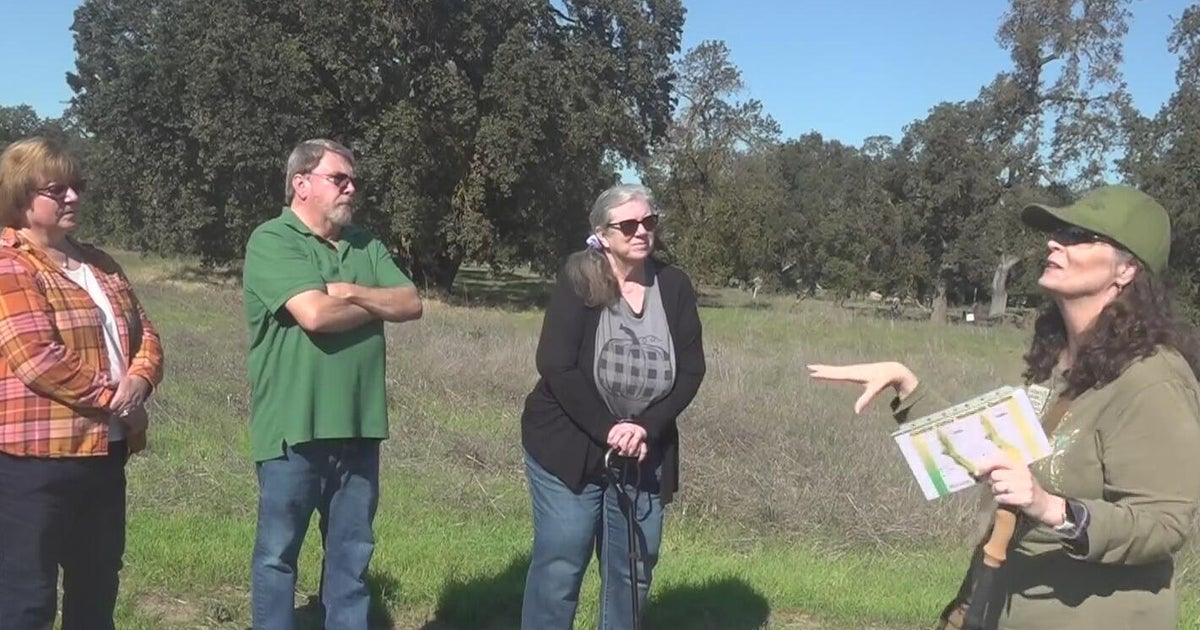California
Beach erosion will make Southern California coastal living five times more expensive by 2050, study predicts

Rising sea levels and urban development are accelerating coastal erosion at an alarming rate in Southern California with significant ripple effects on the region’s economy, a USC study reveals.
The study, published in Communications Earth & Environment, predicts that Southern California’s coastal living costs will surge fivefold by 2050 as a direct result of beach erosion. This erosion will require more frequent and costly beach nourishment projects to maintain the state’s treasured shorelines, consequently driving up the cost of living along the coast.
“Our study presents compelling evidence of the rapid deterioration of Southern California’s coastal landscapes,” said Essam Heggy, a geoscientist in the Ming Hsieh Department of Electrical and Computer Engineering/Electrophysics at the USC Viterbi School of Engineering and the study’s corresponding author.
“The challenges facing Southern California mirror a growing threat shared by coastal communities worldwide. The environmental and economic implications of coastal erosion reach far beyond California’s shores and demand interdisciplinary, global solutions,” he said.
Coastal erosion: Cost of living sure to surge as sandy beaches disappear
To predict future changes along California’s sandy coastlines, the researchers focused on the Gulf of Santa Catalina, which stretches over 150 miles from the Palos Verdes Peninsula in Los Angeles County to the northern tip of Baja California in Mexico.
They used a combination of historical and recent satellite images as well as advanced algorithms to analyze coastline movement and predict future erosion based on different trends and environmental factors.
The study predicts a tripling of erosion rates by 2050, increasing from an average of 1.45 meters per year to 3.18 meters by 2100. Consequently, the annual sand requirement for beach nourishment could triple by 2050, with costs rising fivefold due to the global increase in sand prices. This will exacerbate economic and logistical pressures on coastal communities.
Beach nourishment is adding sand to an eroded beach to rebuild it and create a wider barrier against waves and storms.
“Our investigation suggests that coastal problems start inland due to the rapid growth of cities along the coast, which compromise inland sediment replenishment of sandy beaches,” said Heggy, whose research focuses on understanding water evolution in Earth’s arid environments.
“As our beaches shrink, the cost of maintaining them will rise. Finding innovative solutions is key to securing a sustainable future for our shores and local economies,” he said.
Coastal erosion in California: A case study for a global problem
Coastal cities in Southern California and those in North Africa bordering the Mediterranean Sea face a common challenge: a semi-arid climate year-round coupled with the growing threats of rising sea levels and eroding shorelines.
A significant portion of Earth’s landmass, roughly 41%, falls under arid or semi-arid classifications, and these areas support over a third of the global population.
To understand this global challenge, the researchers focused on two specific locations: Corona del Mar in Orange County, Calif.—an example of the typical Southern California coastline—and Hammamet North Beach in Tunisia. Both are densely populated and share similar climates, prone to increasing droughts, flash floods and unpredictable rainfall patterns. These characteristics mirror the challenges faced by countless coastal communities worldwide.
The findings showed that the average rate of shoreline retreat in these areas varies. In Southern California, beaches are receding between 0.75 and 1.24 meters per year. In Hammamet North Beach, the retreat rate ranges from 0.21 to about 4.49 meters annually.
“While beach nourishment can temporarily combat erosion, however, it presents significant challenges for developing countries,” said Oula Amrouni, a sedimentologist at the National Institute of Marine Sciences and Technologies at the University of Carthage, Tunis, Tunisia, and one of the study’s co-authors.
“The high cost of acquiring the right sand, with the specific grain size, quality and composition, and the technical complexity of extracting and laying it are major hurdles. Additionally, worsening erosion in previously stable areas compels more frequent nourishment projects, straining already limited budgets and leading to unplanned expenditures for many communities.”
More information:
Oula Amrouni et al, Shoreline retreat and beach nourishment are projected to increase in Southern California, Communications Earth & Environment (2024). DOI: 10.1038/s43247-024-01388-6
Provided by
University of Southern California
Citation:
Beach erosion will make Southern California coastal living five times more expensive by 2050, study predicts (2024, May 22)
retrieved 22 May 2024
from https://phys.org/news/2024-05-beach-erosion-southern-california-coastal.html
This document is subject to copyright. Apart from any fair dealing for the purpose of private study or research, no
part may be reproduced without the written permission. The content is provided for information purposes only.

California
Did Prop 50 pass in California? What to know about redistricting measure

Californians cast Prop 50 ballots in fight over redistricting.
Redistricting and voting rights take center stage as Californians vote on Proposition 50.
California voters on Nov. 4 passed Proposition 50, a constitutional amendment that allows a redrawing of the state’s congressional district boundaries, a major win for Democrats.
The measure, which was pushed by Democratic Gov. Gavin Newsom, permits California’s Democratic state lawmakers to temporarily redraw the state’s U.S. congressional districts to increase their party’s chances of winning more seats in Congress.
After the 2030 U.S. Census, the state will return to using a nonpartisan commission to draw their congressional district boundaries.
Prop 50’s passing essentially negates five new GOP-leaning congressional districts Texas created earlier this year at the urging of President Donald Trump. Here’s what to know.
Did Prop 50 pass?
Yes, Proposition 50 passed in California. The measure authorizes a temporary redrawing of the state’s congressional districts ahead of the 2026 midterms.
Democrats hope the amendment will offset a Republican-led redistricting in Texas. With California and Texas having the largest Democratic and Republican delegations, respectively, they hold more weight in who controls the U.S. House of Representatives. Republicans currently hold a razor-thin majority in the U.S. House.
Redistricting typically happens at the start of every decade, but some states are prohibiting more mid-decade changes.
“What a night for the Democratic party,” Newsom said after polls closed on Nov. 4.
Trump denounced the results in a post on Truth Social.
“The Unconstitutional Redistricting Vote in California is a GIANT SCAM in that the entire process, in particular the Voting itself, is RIGGED,” he wrote.
Prop 50 election results
Over eight million Californians turned out to vote for Prop 50, according to data from the California Secretary of State.
More than 63% of voters elected to pass Prop 50, while roughly 36% voted against it.
Melina Khan is a national trending reporter for USA TODAY. She can be reached at melina.khan@usatoday.com.
Contributing: Sarah D. Wire, Ramon Padilla and Ignacio Calderon, USA TODAY
California
California Quietly Kills Electric Bike Vouchers, Sending Money to EV Incentives Instead | KQED

“I think that’s really unfortunate that we’re responding to the current federal situation by limiting Californians’ ability to get really the cheapest and most economical, sustainable transportation option, instead of sort of doubling down and saying, ‘We have this really low-cost option that opens trips up for more people, and then we also have this other option for people who need cars,’” Ramsey said.
CARB’s e-bike program, created by a bill passed in 2022, faced difficulties getting off the ground. It wasn’t until 2024 that the agency began issuing $1,750 vouchers for a range of approved bikes to people whose annual household income fell under 300% of the federal poverty line. An additional $250 was available to applicants who met further income criteria.
The program was designed to expand access to an affordable transportation model, especially for non-drivers and people with limited mobility.
While it was heralded initially as an ambitious, and significant, step toward clean transportation, it also invited widespread criticism after a slow rollout, multiple pushed-back application timelines and two state investigations into Pedal Ahead, the nonprofit chosen to administer the vouchers.
Applicants also expressed frustration over technical issues with the application process once it got underway.
While the state’s electric vehicle incentive program has a rolling application process, the e-bike voucher program, by contrast, requires people to log onto the website at a prescribed time, click the application portal at just the right moment and enter their information under a time crunch.
“I found it a little bit surprising that the same entity would have two similar voucher programs run completely different ways … when they had an existing program that was already working, that was distributing a large amount of money as well,” Ramsey said.
California
Nature tour highlights historic importance of California oak trees during the fall

The Shumway Oak Grove Regional Park in Stockton launched an autumn nature walk for the community to get an inside look at how important California’s historic oak trees are, especially during the fall.
Carolyn Dougherty is a volunteer naturalist at Oak Grove Nature Center and led a group of people on Sunday morning for a new nature walk, which kicked off this fall: “Autumn Among the Oaks”.
“During the autumn, we talk about what’s happening here in the autumn, like our oak galls and our acorns,” Dougherty said. “And what animals are doing and what our Yokuts tribes were doing at this time of year, which was gathering acorns to store for the winter.”
Dougherty is a retired educator and a big advocate for lifelong learning, not just for herself but to share knowledge with others — especially at this Oak Grove preserve.
“We are a preserve,” Dougherty said. “And I’d like people to understand why the importance of preserving the oak groves isn’t just because of the trees but all of the species that each tree supports.”
Dougherty said these oaks are keystone species, supporting up to 4,000 different species like California scrub-jays, acorn woodpeckers, California ground squirrels, and Western lizards.
“This is my second time taking this tour because I find it fascinating,” Dr. Julie Bates-Livesay, a Stockton resident, said. “And so I got to learn more about galls that grow on oak trees that we make ink out of them, that historic documents were written in the ink produced by them.”
Dougherty said the Yokuts Trail and Miwok Trail were named to pay homage to the ancestors of the area. And as these leaves fall this season, one of the goals of the tour is to have an appreciation for California’s rich history.
“To know where we came from and just to have a deeper appreciation of native California history…the importance of our landscape and what our native landscape contributed to our indigenous people, and how it transformed with our agriculture and industry,” Dougherty said.
Dougherty says 80% of these groves in California are unprotected and can be affected by development and agriculture.
“So, each time that we can protect a little pocket of it is important to us,” Dougherty said.
“Come out and be in nature,” Dr. Bates-Livesay said. “We’re very fortunate to live where we live, to have access to this kind of a nature environment. Whether it be here, at Oak Park, or in Lodi, at Lodi Lake, or a little further up the hill at one of our California or National Parks. We’re blessed here in California to have that kind of access.”
With each step the local community members took with the tour, they learned to appreciate the oaks, their history, and the steps it takes to preserve the land amidst this season.
“To see the park being utilized, from everything from frisbee golf to these kinds of educational tours is a big thing,” Dr. Bates-Livesay said.
“I think it’s really important to understand where we came from, and that our part in this life is to be a good steward,” Dr. Bates-Livesay said. “And the only way you can be a good steward is if you even know that nature exists and that you’re a part of that.”
There will also be a Sandhill Crane Festival in Lodi next week. Dougherty told us these habitats were once threatened, but with the help of conservationists and local farmers working together, she says the cranes are coming back.
There are tours for different seasons with different topics related to the season, along with a nature center with different programs. Some of those include walks, school tours, an “Astronomy in the Park” monthly event to see stars, and hands-on learning for people of all ages.
For Dr. Bates-Livesay and her friends, they capped off the tour with a picnic among the oaks.
-

 Milwaukee, WI1 week ago
Milwaukee, WI1 week agoLongtime anchor Shannon Sims is leaving Milwaukee’s WTMJ-TV (Channel 4)
-

 News1 week ago
News1 week agoWith food stamps set to dry up Nov. 1, SNAP recipients say they fear what’s next
-

 Alabama1 week ago
Alabama1 week agoHow did former Alabama basketball star Mark Sears do in NBA debut with Milwaukee Bucks?
-

 Culture1 week ago
Culture1 week agoVideo: Tyler Mitchell Breaks Down Three Photos From His New Book
-

 News1 week ago
News1 week ago1 dead, 6 injured in shooting at Lincoln University homecoming festivities
-

 Culture6 days ago
Culture6 days agoVideo: Dissecting Three Stephen King Adaptations
-

 Seattle, WA3 days ago
Seattle, WA3 days agoESPN scoop adds another intriguing name to Seahawks chatter before NFL trade deadline
-

 Seattle, WA1 week ago
Seattle, WA1 week agoFOX 13’s Aaron Levine wins back-to-back Jeopardy! episodes


















